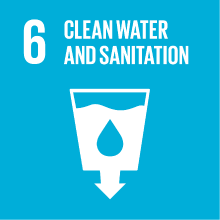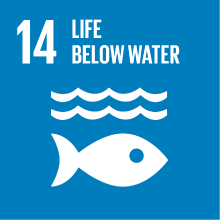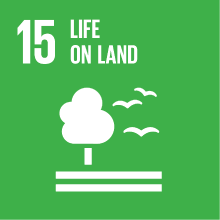ECOLOGY II AND LAB
- Academic year
- 2023/2024 Syllabus of previous years
- Official course title
- ECOLOGIA II E LABORATORIO
- Course code
- CT0370 (AF:359494 AR:186827)
- Modality
- On campus classes
- ECTS credits
- 6
- Subdivision
- Class 2
- Degree level
- Bachelor's Degree Programme
- Educational sector code
- BIO/07
- Period
- 2nd Semester
- Course year
- 3
- Where
- VENEZIA
- Moodle
- Go to Moodle page
Contribution of the course to the overall degree programme goals
The module 1 (Volpi Ghirardini) is organized in lectures and laboratory experiments. The lectures are intended to introduce some of the main causes of alteration of aquatic systems and to provide a basis for the use of ecological principles, natural processes and components of ecosystems in order to preserve and restore their structure and functioning. The 6 laboratory experiences cover the qualitative and quantitative analysis of populations and/or communities (micro and macroscopic, vegetal and animal), coming from different environments (natural, modified and artificial) both freshwater and marine, as well as the evaluation of responses to stress factors useful for environmental protection and evaluation. the discussion of case studies and the application of animal and vegetable bioindicators useful to the protection and environmental assessment.
Case studies and / or seminars may be also proposed.
Module 2 (Adriano Sfriso) is organized in 12 hours of theoretical lessons and 6 laboratory experiences of 4 hours each for a total of 24 hours. For the laboratories, the students will be divided into two classes with tests carried out on different days. The course aims to provide students with practical knowledge of applied ecology on ecological systems on a multidisciplinary scale by integrating biological, chemical, physical and sedimentological knowledge with statistical applications and processing. The laboratory tests intend to introduce both the main physical-chemical field measurements and the basic biological elements closely related to environmental and climatic variations.
The aim is to learn about the parameters related to the main environmental processes and the interaction between biotic and abiotic elements for environmental quality assessment and environmental management.
.
.
Expected learning outcomes
Know the basic principles and processes for the functioning of the natural and modified environment;
Become familiar with analytical techniques / procedures and with small laboratory instruments.
Judgment skills:
Knowing how to evaluate the meaning and validity of the data collected, the merits and limits of the various ecological analysis techniques;
Knowing how to choose the most suitable procedures for each laboratory operation.
Learning ability:
Acquire the ability to rework the concepts presented in class. Knowing how to adequately connect the topics covered;
Understanding simple analytical procedures for determining the most common physico-chemical analyzes and environmental variables.
Communication skills:
Acquire the ability to present the topics with appropriate terminology.
Pre-requirements
Contents
Modifications of the water cycle. Modifications of water courses and effects on aquatic ecosystems. Ecological principles for the protection and management of water resources.
Ecological principles and methodologies for the protection and rehabilitation of aquatic environments:
- Cycle of organic matter in an aquatic environment and its modifications. Pollution and effects from metabolizable organic substances. Control of metabolizable organic loads, biological purification. Introduction to the microbial ecology of activated sludge.
- Modifications of the N and P cycle. Eutrophication of internal aquatic environments. Protection and remediation strategies for eutrophic water bodies.
Bio-ecological principles and methodologies for environmental protection and assessment:
- Introduction to the principles and methods of ecotoxicology.
- Introduction to bioindication. Classification and requirements for bioindicators and biological indices.
Module 1- Laboratory experiences
1) Freshwater macroinvertebrates: focus on specific groups, adaptations, life cycles, population dynamics.
2) Analysis of a trophic network of debris: trophic and functional groups, density and diversity measurements.
3) Microalgae: the growth of a phytoplankton population and algal density estimates.
4) Responses to toxic substances: the phytotoxicity test with higher plants. Application of ecotoxicological indices.
5) Macrobenthic species as bioindicators: 1) Bivalves: morphometries and application of condition indexes in natural or breeding populations.
6) Macrobenthic species as bioindicators: 2) Polychaetes: morphometries in polychaeta populations used as bioindicators for sediments.
Module 2.
During the course lessons and laboratory experiences will be carried out to determine the most common physico-chemical parameters and nutrients in different environmental matrices (water, sediments, interstitial waters, macrophytes). The aim is to acquire basic notions on these issues and to become familiar with the normal equipment and small laboratory instruments by learning the working methods common to all the analytical procedures
The six laboratory experiences are:
1) Methods for the determination of salinity and dissolved oxygen by titration on some lagoon samples. Furthermore, the ecological role of these environmental parameters is assessed;
2) Determination of a calibration line to determine the phosphorus starting from an anhydrous dihydrogene phosphate salt;
3) Determination of the orthophosphates, ammonia, nitrites, nitrates in the water column with a reference to nitrogen and phosphorus cycles. In practice, the concentrations of the reactive phosphorus and of the nitrites in some samples of lagoon waters is determined by evaluating the trophic status of the examined waters;
4) Determination of the fine fraction (<63μm), humidity, porosity and density in different samples of lagoon sediments to understand their environmental implications. At the same time, interstitial waters for the determination of nutrients are extracted from the same samples, specifically orthophosphates and nitrites;
5) Determination of chlorophylls and phaeopigments in the water column and in the tissues of algae and plants of lagoon or river waters and their ecological significance is evaluated;
6) Determination of total inorganic and organic phosphorus in sediments, particulate matter and plant samples. Specific sediment samples are extracted for the determination of inorganic phosphorus.
Referral texts
Assessment methods
Module 1 - Written test and report on some laboratory experiences. Optional or substitute oral exam (DSA, foreign students)
Module 2 - Written test on three laboratory experiences and on the ecological significance of the examined parameters/variables.
Type of exam
Teaching methods
Lectures will be held in powerpoint. The laboratory exercises include the analysis of stored samples or biological material in vivo.
Module 2
Lectures will be held in powerpoint. Laboratory experiences will be conducted on fresh water and sediment samples and on samples of dried biological material.
Teaching language
2030 Agenda for Sustainable Development Goals
This subject deals with topics related to the macro-area "Natural capital and environmental quality" and contributes to the achievement of one or more goals of U. N. Agenda for Sustainable Development



